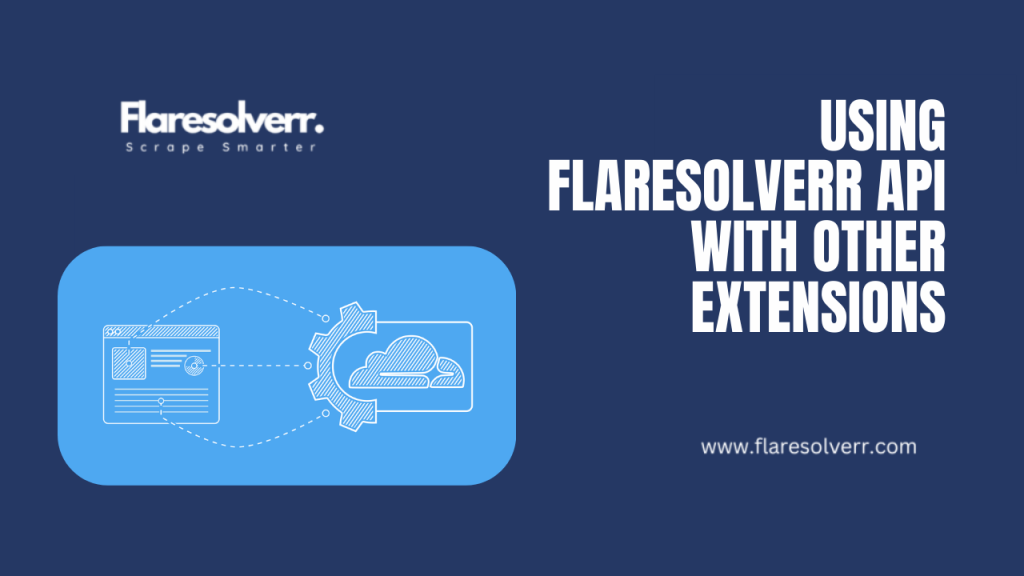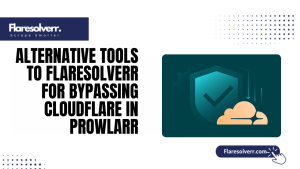Table of Contents
ToggleIntroduction
If you love web scraping or using tools like Jackett, FlareSolverr Linux is a total game-changer. It helps bypass tricky Cloudflare protections, allowing your automated requests to run smoothly without interruption. Knowing how the FlareSolverr API URL works makes your setup faster and less frustrating. Using FlareSolverr Linux with extensions or Jackett can save a significant amount of time.
Overview of FlareSolverr API
FlareSolverr Linux is a handy tool that helps bypass Cloudflare and other anti-bot protections while scraping websites. Its API is the heart of this process, allowing tools like Jackett to communicate seamlessly with protected sites.
The API acts as a bridge between your scraper and the web, ensuring that requests are processed without interruption.
Importance of using FlareSolverr with Jackett and other extensions
Pairing FlareSolverr Linux with Jackett or other extensions unlocks the full potential of automated searches. Jackett relies on FlareSolverr to bypass protections, ensuring that queries fetch results without errors. This combination makes torrent indexing and media discovery much more reliable.
What is the FlareSolverr API URL?
The FlareSolverr API URL is the endpoint where your applications connect to FlareSolverr. It’s a simple address, usually in the form of or a custom host and port. This URL serves as the gateway for Jackett or other tools to send scraping requests securely. With FlareSolverr Linux, the API URL is essential because it enables multiple programs to interact with the FlareSolverr process simultaneously.
Definition and core functionality
At its core, the FlareSolverr API URL provides a way to interact with the FlareSolverr service using HTTP requests. Tools like Jackett send JSON commands to this URL, asking FlareSolverr to fetch pages, handle Cloudflare challenges, and return results. This setup removes the need for local browser automation.
By using FlareSolverr Linux efficiently, users can handle scraping in a lightweight and reliable manner. The API is the brain that runs in the background, making everything seamless without manual intervention.
How it interacts with web scraping tools like Jackett
- Web scraping tools connect to the FlareSolverr API URL to request protected content.
- Jackett sends search queries to the API, and FlareSolverr handles anti-bot defenses.
- Results are returned without CAPTCHA interruptions.
- Using FlareSolverr Linux with Jackett allows multiple tools to run simultaneously.
- The API manages sessions, cookies, and headers in real-time for smooth operation.
Key benefits of using the API URL
The API URL offers reliability, speed and automation. Instead of manually solving challenges, FlareSolverr handles everything through its endpoint. This makes tools like Jackett more efficient, reducing downtime. Another benefit is scalability. With FlareSolverr Linux, multiple applications can share a single API URL enabling smooth operation across different tools. It also simplifies configuration, making it easier for new users to start scraping without technical hurdles.
How to Configure FlareSolverr API URL with Jackett
Setting up FlareSolverr Linux with Jackett is easier than it sounds. First, ensure that FlareSolverr is running and accessible. Once it’s active, Jackett can use the API URL to communicate and fetch protected content without interruptions. Configuration ensures that your searches proceed smoothly.
By pointing Jackett to the correct API URL you remove CAPTCHA and blocked pages from the equation. For detailed installation instructions, check how to install FlareSolverr on Linux or Windows.
Locating the FlareSolverr API URL
Finding the API URL is simple. By default, FlareSolverr Linux runs on, but this can be customized in the configuration file. Checking the settings or startup logs usually reveals the active URL and port. Knowing the URL is crucial because Jackett or any extension won’t function without it. Always ensure the API URL is reachable from the application host to avoid connection errors or timeouts.
Adding the URL in Jackett settings
Once you have the API URL open Jackett and navigate to its Server Settings, paste the FlareSolverr Linux API URL into the FlareSolverr field. Save changes and make sure the service restarts properly to apply the new configuration. This step allows Jackett to communicate directly with FlareSolverr. After adding the URL Jackett can now bypass website protections and return results without manual intervention making searches seamless and fast.
Testing the connection to ensure it works properly
After configuring the URL, it’s essential to test the connection. Jackett usually offers a Test button to confirm communication with FlareSolverr Linux. Successful tests mean your setup is correct and ready for automated scraping. If the test fails, double-check the URL, port, and firewall settings to ensure they are accurate and correct. Ensuring the connection works prevents frustration later and keeps your scraping process smooth and uninterrupted.

Using FlareSolverr API with Other Extensions
FlareSolverr Linux isn’t just for Jackett. Many extensions and apps that fetch web content benefit from the API. It allows them to bypass anti-bot protections and retrieve data efficiently without interruptions. Integrating with multiple tools ensures your workflow stays consistent.
The API manages sessions and resolves challenges in the background, providing all connected extensions with a stable and reliable connection. For more setup tips, see how to add FlareSolverr to Prowlarr.
Popular extensions compatible with FlareSolverr
- Besides Jackett, tools like Sonarr, Radarr, and Lidarr can use the FlareSolverr Linux API.
- These apps scrape websites to update libraries or download media content efficiently.
- FlareSolverr ensures smooth communication with protected sites.
- Using the API allows these extensions to operate without CAPTCHA interruptions.
- It automates media libraries, ensuring fast and uninterrupted content discovery.
Step-by-step integration guide
Integration starts with running FlareSolverr and noting the API URL. Then, open the extension’s settings, locate the FlareSolverr or proxy field, and paste the URL. Save changes and restart the app to apply. Testing the connection comes next. A successful response confirms that FlareSolverr Linux is handling challenges properly.
Common issues and troubleshooting tips
Some users face timeouts, connection errors, or invalid API responses. Often, these issues occur due to incorrect URLs, blocked ports, or firewalls. Verifying that FlareSolverr Linux is running and reachable usually fixes most problems. Other tips include checking FlareSolverr logs for detailed error messages, ensuring your extensions are up to date, and avoiding multiple conflicting instances of FlareSolverr.
Advanced Tips for Optimizing FlareSolverr API Usage
Optimizing FlareSolverr Linux makes your scraping faster and more reliable. Minor tweaks can prevent delays and improve performance across multiple tools. By adjusting specific settings, you can ensure that Jackett and other extensions run smoothly without interruption.
Another tip is to monitor how requests are handled. Optimized API usage reduces errors, prevents timeouts, and maintains a consistent workflow.
Adjusting timeout and request settings
FlareSolverr lets you customize timeout limits and request retries. If requests take too long, increasing the timeout ensures that your tools receive the necessary response. This is especially helpful when scraping heavy or protected sites.
Using FlareSolverr Linux with proper timeout settings prevents premature failures. By fine-tuning these values, you can handle slower websites without recurring errors, ensuring automation remains smooth and hassle-free.
Managing concurrent connections
If you’re running multiple applications with FlareSolverr, managing concurrent connections is key. The API can handle multiple requests simultaneously, but overloading it may result in slowdowns or failures. With FlareSolverr Linux, you can configure limits to balance performance. Controlling concurrency ensures all connected tools get timely responses without overwhelming the service, which keeps your scraping efficient.
Security considerations for API usage
Keeping the API secure is crucial. Avoid exposing the FlareSolverr API URL to public networks, and consider using firewalls or authentication to limit access. This prevents misuse or unauthorized scraping. Using FlareSolverr Linux safely ensures your data and workflows remain protected. Simple precautions, such as IP restrictions or strong passwords, reduce risks while maintaining smooth, automated operations.
Best Practices for Smooth Operation
Following best practices keeps FlareSolverr reliable for Jackett and other extensions. Regular maintenance, proper configuration and monitoring prevent errors before they disrupt your workflow. With FlareSolverr Linux combining updates, log checks and automation ensures a stable environment. This proactive approach saves time and keeps scraping tasks consistent and predictable.
Keeping FlareSolverr and Jackett updated
Updates bring improvements and bug fixes. Running the latest versions of FlareSolverr Linux and Jackett ensures compatibility and better performance. It also helps avoid known errors and security vulnerabilities. Frequent updates mean new features and smoother handling of websites that implement stricter protections. Staying current keeps your scraping tasks seamless and efficient.
Monitoring logs and errors
Logs are your best friend when troubleshooting. FlareSolverr Linux provides detailed logs that show request errors, timeouts, and other issues. Checking logs regularly helps you identify and resolve minor problems before they escalate. By monitoring errors, you can adjust configurations and prevent downtime. This proactive approach ensures Jackett and extensions operate without surprises.
Automating startup and maintenance tasks
Automating FlareSolverr startup saves time and reduces human error. Using system services or scripts to launch FlareSolverr Linux ensures it’s always ready when your extensions need it. Automated maintenance tasks, such as clearing sessions or rotating logs, help maintain optimal performance. Automation keeps your scraping environment reliable, eliminating the need for manual intervention.
Conclusion
Setting up and using FlareSolverr Linux with Jackett and other extensions is a game-changer for smooth, automated scraping. Once the API URL is configured correctly, you can bypass CAPTCHA, avoid blocked pages, and keep your workflows running effortlessly. Optimizing settings, monitoring logs, and automating tasks ensure consistent performance.
FAQs
What is the default FlareSolverr API URL?
The default URL is usually http://localhost:8191. You can customize it in the configuration file.
Can FlareSolverr API work on all operating systems?
Yes, FlareSolverr Linux works on Linux, and other versions exist for Windows and Docker environments.
How do I test if the API URL is active?
Use the Test button in Jackett or send a simple GET request to the API URL. A successful response confirms it’s working.
Is authentication required for the API?
Authentication isn’t mandatory by default but can be enabled for added security to prevent unauthorized access.
Can multiple applications use the same API URL?
Yes, the API can handle multiple tools simultaneously however monitoring concurrency is recommended to prevent slowdowns.
How to troubleshoot failed requests from Jackett?
Check the URL, port, firewall settings and FlareSolverr logs. Ensure the service is running and reachable from the host.
Latest post:
- Alternative Tools to Flaresolverr for Bypassing Cloudflare in Prowlarr
- Best Practices for Securing Flaresolverr in Prowlarr Deployments
- Installing Flaresolverr via Docker vs Native on Different OSes
- tty not available Error in FlareSolverr How to Fix on Linux
- Is FlareSolverr Still Working? Latest Status and Fixes (2025 Update)












